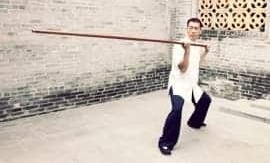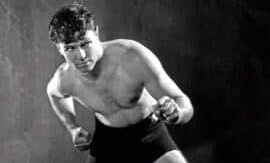
IN FOSHAN, THERE ARE MANY GREAT MASTERS OF WING CHUN. ONE OF THE MOST EMINENT MASTERS IS SIFU GWOK WAI JAAM, WHO IS THE SON AND SUCCESSOR OF GWOK FU—IP MAN’S MOST EMINENT STUDENT IN FOSHAN.
Sifu Gwok has been training in Wing Chun for over 55 years and for many years his whole life has been centred on Wing Chun. Since the early 1980s, he has been actively involved in promoting Wing Chun and held many important positions in the Foshan martial arts community.
One of his appointments is President of the Foshan Wing Chun Association. He is extremely humble, down-to-earth and generously shares what he knows with his students and even people who just stop by for a visit. While he is very well known in Foshan, barely anyone knows of him and his style in the West.
Could you tell us about your martial art background?
I started learning Wing Chun from my father, Gwok Fu, in 1962, when I was ten years old and began helping my father teach in the 1970s. Starting in 1982, I took up various positions in the martial arts community and promoted countless competitions.
My father started learning from Ip Man in 1941. At that time, Ip Man had altogether seven students, of which my father was the oldest one. Because my father had plenty of free time, he learnt from Ip Man every night and also invited Ip Man to join him, when he went on business trips. Not having much to do, Ip Man would often accompany him. This went on from 1941 until late 1944.
Please tell us about your father.
My father then returned to his home village, Zaubiu, and started teaching Wing Chun to some villagers there. He did this for two years, before having to move to Gongjaau for work. During those two years, Ip Man visited Zaubiu village often to visit and teach my father. It was during those years he polished my father’s Baat Jaam Do techniques and taught him the Long Pole. In 1960, my father restarted teaching in our village and took formal students.
What are some of the characteristics of your Wing Chun style?
The following are a few things we emphasise:
• Simplicity, no fancy or big movements.
• Striking the opponent’s weak point to finish the fight quickly.
• Round on the inside, square on the outside.
• “Defence Line” concept.
• Using “light” energy to defeat “heavy” energy.
• Utilising the concepts of “Borrowing Power” and “Deflecting Power”.
• Application of three forces: Chuen Geng Lek, Zhan Geng Lek and Chuen Tao Lek.
• Application of the concepts Giu (“Prying”), Zhaam (“Sinking”), Cit (“Slicing”), Laan (“Blocking”) and Cau (“Lifting”).
• Emphasis on offensive and defensive footwork.
These might sound familiar to other Wing Chun people, but often, the understanding of these sayings differs greatly from school to school.
What is the purpose of the empty-hand forms?
Each of the empty-hand forms has a different theory and different concepts, and focus on specific distances and angles used in fighting. In actual combat, we use the Biu Ji strategies and techniques to defeat Siu Lim Tau, Cham Kiu to defeat Biu Ji, and Siu Lim Tau to defeat Cham Kiu. As you can see, the forms are just like the children’s game “paper-rock-scissors”—they complement each other and must be used flexibly and interchangeably, as demanded by the situation.
What is the difference between Kuen Kuit and Sum Faat?
The Kuen Kuit relate to how different techniques are executed, used or applied. Knowing them, it will be easier to understand the hows and whys of the techniques and facilitate their practical application. Everybody can create his or her own Kuit for the techniques they excel at as they reflect the specialities and understanding of different people, but one can’t have one’s own versions of Sum Faat. These constitute our general principles, the “rules of the style”, which makes Wing Chun Wing Chun.
Generally, all the moves from our forms are “dead” Kung Fu, and we must make them “alive” by training Chi Sau. In our style, there are three main purposes to train it:
• To cultivate awareness.
• To understand the concept of the “Defence Line”.
• To develop instant reactions.
Chi Sau training follows certain rules and focuses on developing specific techniques and skills and as such has certain limitations. Thus, it can’t be considered real fighting. Also, even though we apply our actual fighting techniques in Chi Sau training, due to said limitations, it’s still not real fighting. Just being good at Chi Sau doesn’t translate into true fighting skill—other complementary training methods are needed.
Is it necessary to change or modify the Wing Chun techniques from the forms to participate in modern fighting competitions?
As I said, fighting differs greatly from Chi Sau. Our forms contain many of the same techniques used in modern, Western Boxing although they are applied according to the Wing Chun Sum Faat. The techniques we learn in our forms and learn to apply in Chi Sau and various fighting drills are the same we use for fighting, so it is possible to apply Wing Chun techniques in sportive fighting without having to modify or change them to the extent they become something different than Wing Chun. It all depends on proper training.
Which attributes are important for fighting?
The most important attribute for fighting is the proper mindset. Our focus should be on attacking, using the most simple, direct, most powerful technique and the best angle for maximum effect. As far as physical attributes go, the most important one is speed, followed by knowing the correct angles and then accurate hand positions/movements and power. The best way to develop those attributes is to isolate them and work them specifically, and then later to integrate all of them and apply them in the drills, fighting, etc. Obviously, for competitive fighting, stamina is a must.
Is Wing Chun an “Internal” or “External” martial art?
There are many ideas about what exactly Internal and External means and how it should be understood correctly. In our style, we make the distinction according to how the power (Lek), generated by Qi and blood, flows. We utilise the so-called “Inside Bridge Power”, in which the Lek follows a specific path. This we call “Internal Power”. Because of this, we consider our Wing Chun Internal. It should be noted that this is actually tied to a set of rather concrete biomechanics, not just some intangible philosophical idea.
Do you teach specific, supplementary Hei Gung exercises to enhance your Wing Chun?
We don’t have or use specific Hei Gung exercises such as Jaam Jong per se. However, our Kei Fung Ma, a basic stance equivalent to Yi Ji Kim Yeung Ma, serves the same purpose. Hei is an important element of power generation, so it’s vital to cultivate, store and release it. This is one purpose of the basic stance.
How do you see the future of Wing Chun and how would you like it to develop?
Both in China and abroad there is a trend whereby many teachers mix Wing Chun with other styles and still maintain they are teaching the pure art. If this trend persists, it won’t be long before “authentic” Wing Chun will be lost to future generations. Improving and developing the style is a good thing, something we should strive for, but we should improve from the “inside”, not the “outside”. I hope that in the future we can counter this trend, by standardising, supervising and developing effective teaching and training methods, so there’s no need to look to external sources to develop our style.
I’d like to see a community where all Wing Chun people, from all over the world, mutually share their experience and strong points without internal conflict, suspiciousness and jealousy. In this way, we can develop the style from “inside” and grow, while preserving the roots and thus our traditional Wing Chun. If we can work together towards the same goal, Wing Chun has a bright future and will prosper for many generations to come.



















